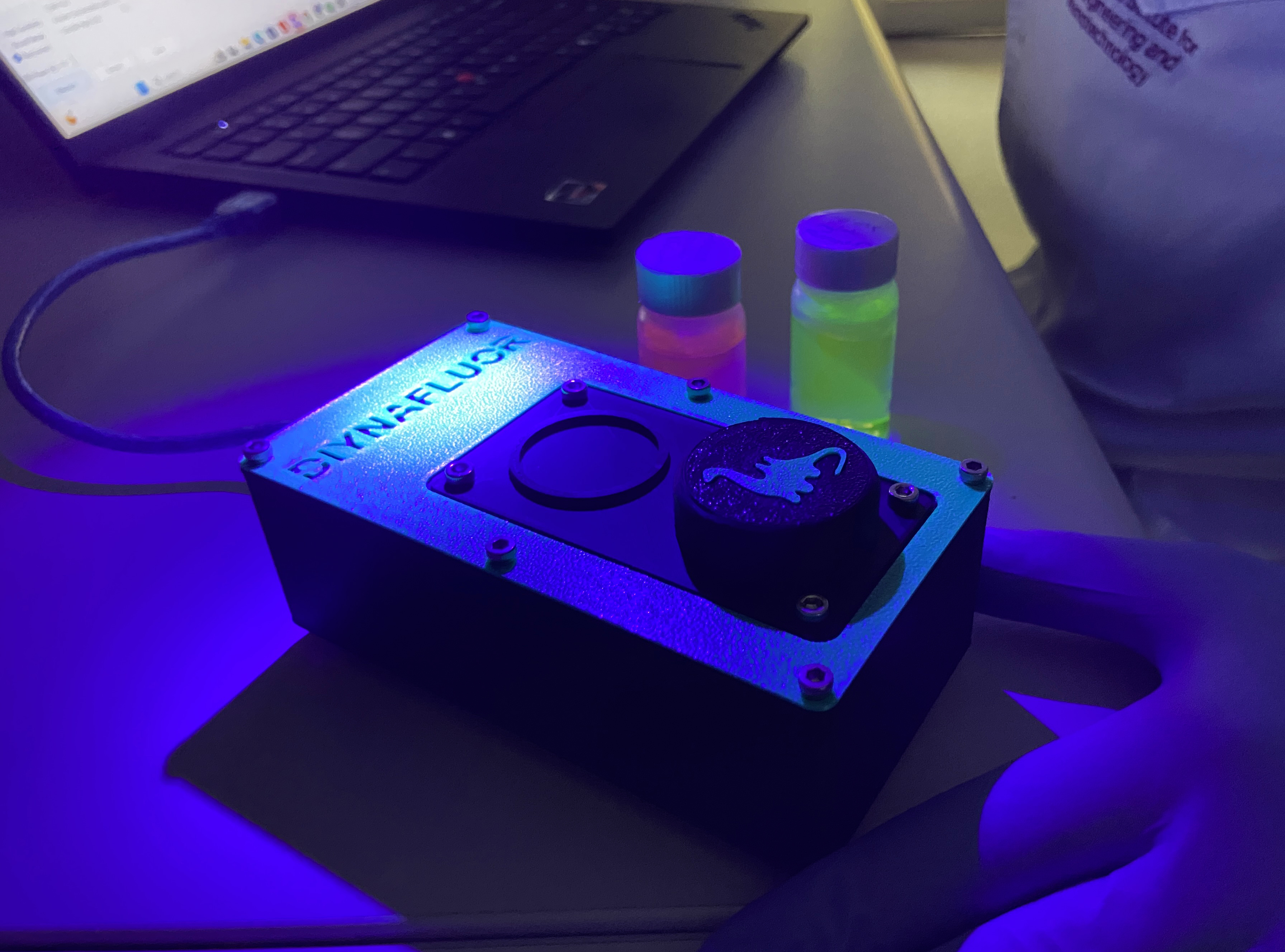Media release
From:
University of Queensland researchers have developed an affordable, open-source DNA measurement tool that can be built using a home 3D printer.
The Do-It-Yourself Nucleic Acid Fluorometer – DIYNAFLUOR – is a portable device designed by Dr Will Anderson at the Australian Institute for Bioengineering and Nanotechnology that measures the amount of genetic material extracted from biological samples.
Determining DNA levels in a sample is a crucial early step in techniques like DNA sequencing, which itself is essential for disease detection, therapeutic innovation and species identification.
But Dr Anderson said commercial fluorometers can be expensive and out of reach for emerging researchers.
“We’re talking thousands of dollars for just one device,” Dr Anderson said.
“Many labs can’t afford that sort of outlay, especially in eDNA where many researchers have limited resources.”
To help level the playing field, Dr Anderson and colleagues at UQ’s Australian Institute for Bioengineering and Nanotechnology collaborated to create a simple fluorometer that can be built at home.
“The DIYNAFLUOR can be made within a day using about $60 of off-the-shelf electrical components, simple 3D-printed parts and design files and build instructions we’ve made freely available online,” Dr Anderson said.
“You don’t need any specialised tools, just access to a basic 3D printer, a screwdriver and some Allen keys.
“Once it’s assembled, users simply mix DNA samples with a DNA-binding fluorescent dye and place into a small well on the top of the device.
“The DIYNAFLUOR then uses a light beam to produce a fluorescent response from the dyed DNA present in the sample and reports the findings to a connect PC or laptop.”
The stronger the fluorescent response, the higher the DNA concentration in the sample.
“This is crucial information that can tell you whether you can proceed with more expensive tests and sequencing,” Dr Anderson said.
Dr Anderson said the DIYNAFLUOR had demonstrated accuracy, precision, sensitivity and reproducibility on par with similar commercial models at a fraction of the cost.
“It’s about democratising science.
“I wanted to make something that anyone could access – whether you’re a researcher in a resource-limited lab, someone working in the regions or remote areas, or a student just starting out.”
The DIYNAFLOUOR build guide and operating files are open source and available to download.
Multimedia





 Australia; QLD
Australia; QLD


